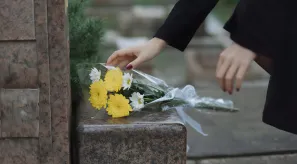There are many different kinds of cemeteries and knowing about them will help you choose the right one for you or your loved one when the time comes. Whether your decision is based on religion, proximity to a location or tradition, understanding more about them will help you make the best possible choice.
What are the different types of cemeteries and how do they differ?
Cemeteries fall into a number of categories, each with its own benefits and disadvantages. And it is not just a question of choosing between one of the largest cemeteries in Spain or a more intimate one. Other factors also need to be taken into account.
Public and private cemeteries: what is the difference?
Cemeteries can either be public or private, and each has their differences.
- Public cemeteries are managed by local councils or government bodies. Private cemeteries, on the other hand, belong to companies or private entities.
- Public cemeteries offer basic burial and maintenance services, while private cemeteries can provide additional services such as landscaped areas, private security and personalised burial options.
- In terms of cost, public cemeteries tend to be cheaper, whilst private cemeteries are more expensive. However, the price is more than justified by the better quality of the services they have to offer.
Religious and secular cemeteries: main characteristics
The religious orientation of a cemetery influences the practices allowed in and around the cemetery.
- Religious cemeteries are associated with a specific faith, such as Catholicism, Judaism or Islamism, and in order to be laid to rest in them it is normal for the deceased to share the same faith or to comply with certain rites. In addition, they often include religious symbols and structures, such as chapels or temples.
- Secular cemeteries are not affiliated with any religion and are therefore open to people of all faiths or no religious affiliation and offer ceremonies and burials without religious connotations.
Traditional cemeteries: the most common in the world
These types of cemeteries are adapted to different needs and requirements, and are further subdivided into different classes with very different characteristics.
Urban cemeteries: location and restrictions
These are located in or near metropolitan areas, which places them in densely populated areas which means that space is limited in these areas. They are governed by municipal regulations and usually have easy access for visitors and all the basic services one might expect.
Rural cemeteries: a natural setting
These are located in less urbanised areas, and are usually surrounded by natural landscapes and a serene and peaceful environment.
Typically, larger plots are available and regulations are more flexible.
Ecological cemeteries: a sustainable option
These types of cemeteries are also known as green or natural cemeteries because they involve environmentally friendly funeral processes, without chemicals or the use of non-biodegradable materials.
What is a green or natural cemetery?
This type of cemetery is a space where environmentally friendly burials are practised. No concrete vaults are built, no embalming is carried out and only biodegradable coffins or shrouds are used.
The aim is for the body to decompose in the most natural way, nourishing the surrounding soil and contributing to the biodiversity of the area in which it is located.
Environmental benefits of ecological cemeteries
Choosing an ecological cemetery offers several advantages that are making this option increasingly popular.
- They act as refuges for animal and plant species.
- It is an option that pollutes much less soil and water.
- The burial methods respect natural cycles, reducing the carbon footprint and supporting the regeneration of the environment.
Vertical and digital burial sites: the future of burial
Faced with a shortage of space in urban areas, innovative alternatives have begun to emerge, such as those outlined below.
- Vertical cemeteries, multi-level structures that can accommodate a large number of graves in a small space.
- Digital cemeteries, online memorials where the memory of the deceased is honoured through photographs, videos and biographies, but without the need for a physical grave.
How do vertical cemeteries work?
These types of cemeteries act as multi-storey buildings with each level containing niches for urns or coffins. It is a spatial arrangement that has a number of advantages:
- They make much better use of the space available in urban locations.
- They make visits easier thanks to the use of lifts and ramps.
- They reduce the territorial expansion of traditional cemeteries.
Special cemeteries according to beliefs and traditions
There are cemeteries that are designed with the aim of honouring specific beliefs and traditions of certain communities. These spaces respect rituals and norms that may fit with what you are looking for.
Military cemeteries: a tribute to the fallen
These types of cemeteries are resting places for people who have served in the armed forces and died in service. These cemeteries pay tribute to their sacrifice and are usually operated by government or military entities.
Jewish cemeteries: specific rituals and regulations
Jewish cemeteries are reserved for people who profess Judaism and follow strict religious rules. For this reason, rather than flowers, it is common for graves to have stones placed on them by visitors as a sign of respect. The graves are considered sacred and must remain unaltered in perpetuity.
Stelae's advice on choosing the right cemetery for a loved one
Choosing the resting place for a loved one is an important decision. For this reason, at Stelae, we have advisors who are familiar with all the options available and they are perfectly placed to help you choose the cemetery that best suits the life and wishes of the deceased.



